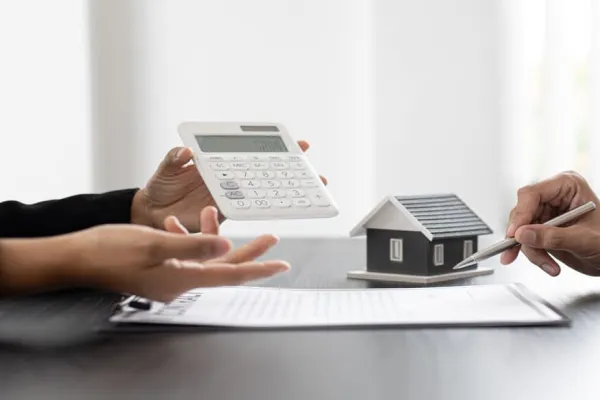Stamp Duty Land Tax (SDLT) has existed for a long time, but the 3% Surcharge was only introduced in the past decade.
If you have a house transaction coming up soon or intend to grow your property portfolio, understanding the intricacies of Stamp Duty and the 3% Surcharge can put you in a more advantageous position. For example, what exactly is the 3% Stamp Duty Surcharge? Why was it first introduced – and are there ways to get out of paying for it? By being well-informed on this subject, you can potentially save significant amounts of money.
Keep reading our article below for a clear overview of these questions.
What is Stamp Duty?
Stamp duty is a tax on any property or land you purchase in the UK over a specific value. In Wales and Scotland, this type of tax has a different name.
The amount you need to pay is different for first-time buyers. Rates can also vary if you own one property, are completing a transaction on another, or are not UK residents.
If this is not your first property purchase, you must pay stamp duty on purchases above £250,000.
The current thresholds for Stamp Duty are:
- £250,000 for residential properties
- £425,000 for first-time buyers buying a residential property worth £625,000 or less
- £150,000 for non-residential land and properties
For any residential property between £250,001 to £925,000, you pay tax at a rate of 5%. Then, between £925,001 and £1.5 million, the rate goes up to 10%, and for anything above this figure, it increases to 12%.
First-time buyer rates
For first-time buyers, the rates are different. Properties costing £625,000 or less don’t have to pay stamp duty on the portion up to £425,000. The rate is then 5% on the portion from £425,001 to £625,000.
What is the 3% Stamp Duty Surcharge?
Put simply, the 3% Stamp Duty Surcharge means that you pay an increased tax rate on second homes, or more, than you would if you owned just one property.
If the property in question is a second, third, fourth (and so on…) property you own, you will pay an extra 3% tax on top of the typical stamp duty rates.
For example, if you usually have to pay 5% tax, this would go up to 8%. If it is usually 10%, then the figure goes up to 13% – and so on.
The 3% Stamp Duty Surcharge, when calculated as a percentage of your sale price, can significantly increase your costs. This additional surcharge often dissuades many from investing in a second home, especially when profit margins are tight.
Why does the 3% Stamp Duty Surcharge exist?
When the Stamp Duty Surcharge was first introduced, it was proposed to make things fairer for first-time buyers. Not only do first-time buyers not need to worry about this additional tax (as they do not own a second property), but it means that the wealthiest in society do not accrue quite as much profit due to the 3% cut on their final selling price. The surcharge also raises more money for HM Treasury.
Can I Avoid Paying the 3% Stamp Duty Surcharge?
You can avoid paying the 3% Stamp Duty surcharge in certain circumstances. The UK government provided Most of these scenarios as guidance for what would or wouldn’t apply.
Scenarios where you can avoid the stamp duty surcharge
Replacing Your Main Residence
If the property you are purchasing is replacing your main residence, you will not have to pay the 3% surcharge, even if you own an extra property at the same time.
Transferring Ownership
If you are transferring ownership (or part ownership) of a residential property to your spouse, the higher rates do not apply, providing that no one else is involved in the transfer.
Moveable Property
The 3% higher rate of SDLT does not apply to “moveable” property, such as a caravan, houseboat, or mobile home, or property with seven years or less left on the lease.
Inherited Property
You also do not usually have to pay Stamp Duty on your inherited house. However, inheritance tax will usually apply in this scenario.
There are several other examples when the 3% Surcharge would not need to be paid. If you are in doubt or need assistance completing paperwork, rest assured that there are qualified experts in this area who can provide guidance specific to your situation.
Their support can give you the confidence to navigate the complexities of Stamp Duty and the 3% Surcharge.
What is a Stamp Duty Surcharge Refund?
As the name suggests, getting a refund on the Stamp Duty 3% Surcharge is possible if you have been wrongly charged. Perhaps the rules surrounding eligibility have changed, or you were not aware at that time that you could avoid it and therefore paid when you shouldn’t have.
If you’ve been wrongly charged the 3% Stamp Duty Surcharge, you have the option to claim a refund. This process can be handled by a solicitor or done independently. Typically, it involves making a claim online or submitting it by post.
Once you send all the necessary information to HMRC, the claim is generally expected to be processed within 15 days. If nothing has happened within this time, you may want to follow up and research whether you are entitled to interest due on the refund.
Owing to the nature of property chains and getting the timing right, it is not always possible to sell your main home before you purchase a second one, even if you are planning to. Therefore, if you sell your previous primary residence within three years (36 months) of purchasing the new one, you may be eligible for a refund of the additional stamp duty you paid. You should seek expert legal support to ensure you are paid everything you are owed.
Is it worth selling my main home before buying my second one?
You should seek expert financial advice on the answer to this question, specific to your situation. Some people choose to sell their house fast so that they only own one property and are therefore not charged a higher tax rate. On the other hand, this is not always the wisest financial decision.
Do non-UK residents pay more Stamp Duty?
You usually pay more stamp duty if you are not a UK resident. At the time of writing, this is 2% higher than the typical rate for a UK resident.
In this context, you are usually legally considered a UK resident if you lived in the UK for at least six months of the twelve months before you purchased the property.
Does Stamp Duty exist in Wales and Scotland?
Yes. In Wales, it is called ‘Land Transaction Tax’, and in Scotland, it is called ‘Land and Buildings Transaction Tax’. The tax rates can vary slightly in these countries, so you should seek out the latest government legislation for the exact numbers.
How quickly does Stamp Duty need to be paid?
You usually have 14 days to file your stamp duty tax return and pay the amount owed. If you submit your payment late, you may be fined.
















